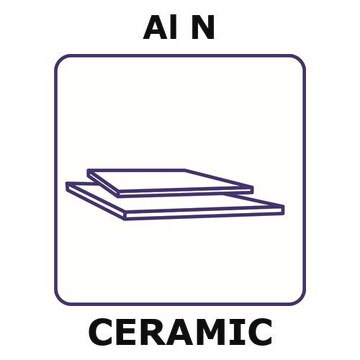HPCT-05-wt
12020703, human kidney, Epithelial
Iniciar sesiónpara Ver la Fijación de precios por contrato y de la organización
About This Item
UNSPSC Code:
41106514
Productos recomendados
product name
HPCT-05-wt, 12020703
biological source
human kidney
growth mode
Adherent
karyotype
Not specified
morphology
Epithelial
receptors
Not specified
¿Está buscando productos similares? Visita Guía de comparación de productos
Cell Line Origin
Human proximal tubule cell, kidney, electrolyte transport-competent, SV40 large T-antigen
Cell Line Description
HPCT-05-wt was developed from a primary cultures of proximal tubule epithelial cells from a 50-year old male which were infected with a replication-defective retroviral construct encoding wild-type simian virus 40 large T-antigen. Cells forming electrically resistive monolayers were selected and expanded in culture. HPCT-05-wt cells form polarized, resistive epithelial monolayers with apical microvilli, tight junctional complexes, numerous mitochondria, well-developed Golgi complexes, extensive endoplasmic reticulum, convolutions of the basolateral plasma membrane, and a primary cilium. The HPCT-05-wt cell line exhibits succinate, phosphate, and Na,K-adenosine triphosphatase (ATPase) transport activity, as well as acidic dipeptide- and adenosine triphosphate-regulated mechanisms of ion transport. Transcripts for Na+-bicarbonate cotransporter, Na+-H+ exchanger isoform 3, Na,K-ATPase, parathyroid hormone receptor, epidermal growth factor receptor, and vasopressin V2 receptor were identified. Furthermore, i mMunoreactive sodium phosphate cotransporter type II, vasopressin receptor V1a, and CLIC-1 (NCC27) were also identified. The Y chromosome could not be detected in this cell line by short tandem repeat (STR)-PCR analysis when tested at ECACC. It is a known phenomenon that the Y chromosome can be rearranged or lost in cultured cells resulting in lack of detection. The cell line is identical to the source provided by the depositor based on the STR-PCR analysis. HPCT-05-wt will differentiate at confluence when cultured on a microporous support. The cells should be seeded at 105 cells/cm2 on collagen-coated 30 mM Millicell-CM culture plate inserts (0.4 μm, Millipore) at 37 °C. EGF and serum should be omitted from the apical side of the chamber. On differentiation the cells form polarised resistive epithelial monolayers with apical microvilli, tight junctional complexes, numerous mitochondria, well-developed Golgi complexes, extensive endoplasmic reticulum, convolutions of the basolateral plasma membrane and primary cilium.
DNA Profile
STR-PCR Data:
Amelogenin: X
CSF1PO: 10
D13S317: 9
D16S539: 11,13
D5S818: 12,13
D7S820: 9,12
THO1: 6,9.3
TPOX: 8,10
vWA: 14,17
Amelogenin: X
CSF1PO: 10
D13S317: 9
D16S539: 11,13
D5S818: 12,13
D7S820: 9,12
THO1: 6,9.3
TPOX: 8,10
vWA: 14,17
Culture Medium
Stemline® Keratinocyte Medium II (S0196) + Stemline® Keratinocyte Growth Supplement (S9945) + L-Glutamine (G7513) + 5 ng/ml human recombinant epidermal growth factor + 5% FBS / FCS (F2442). An alternative medium formulation can be found in Orosz et al., 2004 PMID: 14748622.
Subculture Routine
Split subconfluent cultures (70-80%) 1:3 to 1:6 using 0.25% trypsin/EDTA; 5% CO2; 37 °C. Suggested seeding density 2-4 x 10,000 cells/cm2. Saturation density is approximately 12 x 10,000 cells/cm2. Flasks must be pre-coated with Collagen Type I (C3867) diluted 1:100 with medium without serum. Coating is applied overnight at 37 °C then the flask rinsed with PBS prior to use.
Other Notes
Additional freight & handling charges may be applicable for Asia-Pacific shipments. Please check with your local Customer Service representative for more information.
Legal Information
Stemline is a registered trademark of Merck KGaA, Darmstadt, Germany
Certificados de análisis (COA)
Busque Certificados de análisis (COA) introduciendo el número de lote del producto. Los números de lote se encuentran en la etiqueta del producto después de las palabras «Lot» o «Batch»
¿Ya tiene este producto?
Encuentre la documentación para los productos que ha comprado recientemente en la Biblioteca de documentos.
Nuestro equipo de científicos tiene experiencia en todas las áreas de investigación: Ciencias de la vida, Ciencia de los materiales, Síntesis química, Cromatografía, Analítica y muchas otras.
Póngase en contacto con el Servicio técnico